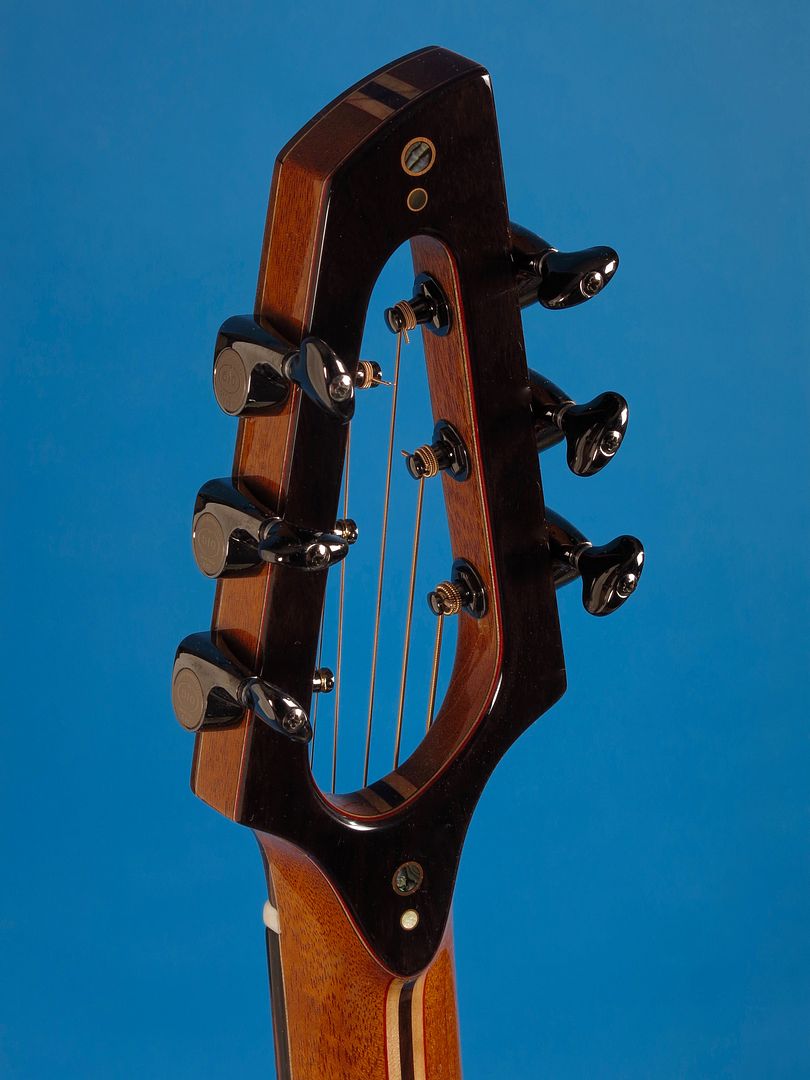Locking tuners typically have a metal post that is either pushed up through the tuning post by a threaded wheel (if bottom locked), or else the post is attached to a threaded cap (if top locked) and pushed down through the post.
You push your string through the hole in the tuner, take up all the slack in the string then turn the locking wheel or cap. The post pushes on the middle of the string in the hole to force it into a shallow 'u' shape, pressing hard against the inner sides of the hole with enough force that the string won't move at all. You then cut off the excess string and start tuning. You are normally there within a full turn of the post. With a locking tuner you want to minimise the amount of string wrapped around the post. With a standard tuner you need 3 or 4 turns around the post to stop the string slipping loose, but there's always some small amount of give in the windings, at least when newly fitted, and if you ever loosen the tuner, then the give will reappear as if by magic.
I think locking tuners would be ideal for this build given the angle the strings will be pulling at (if anything like the example in the photo). It will be hard to stop the strings riding up to the top of the string post unless you are very careful, making string changes slow. Plus with long string ends getting tangled up in the slot and with other strings (before you cut them off), it's worth spending a bit more IMO to avoid all that hassle once it's built.






 Reply With Quote
Reply With Quote




